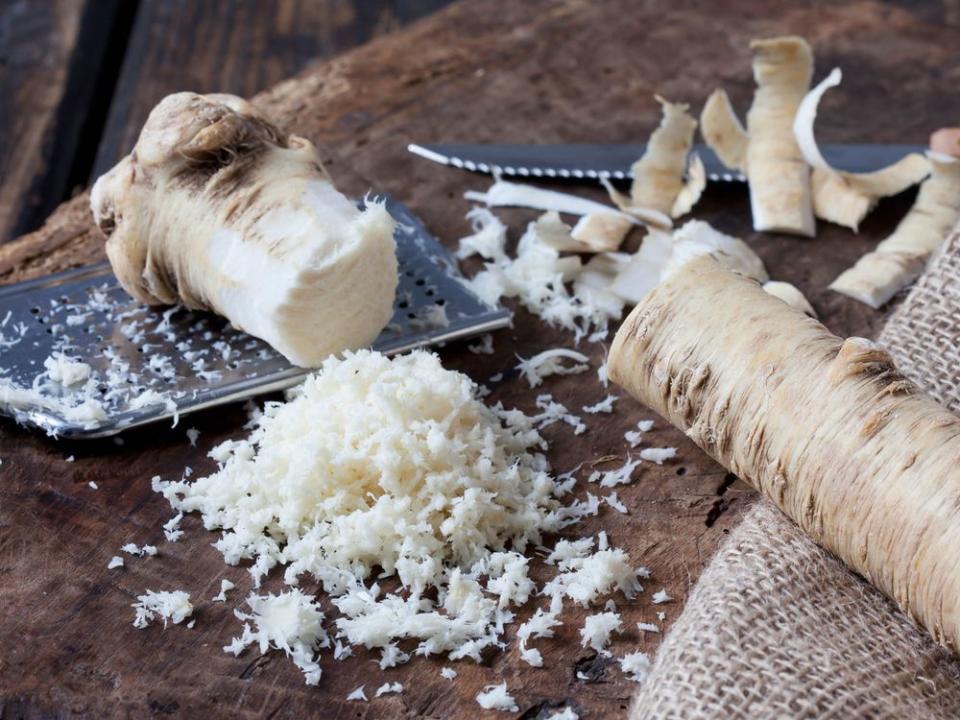Global Horseradish Shortage Threatens World's Sinuses
I love horseradish, but I've never once thought about where it comes from. Maybe I missed the movement, but unlike coffee or wine or fish or fruit, I'm not looking for handpicked, PDO horseradish. Usually it's in a jar, and that jar is labeled "Horseradish." Sold.
But maybe I should have worried more about where my horseradish comes from because, apparently, a lot of its comes from one place, and when they have problems, that's all it takes to create a horseradish shortage—which is what we're facing right now.
Yesterday, Burger King confirmed that the chain was running low on its Zesty Onion dip because it was unable to source the horseradish-based sauce's key ingredient. "The global shortage of horseradish has affected some of our supply of zesty sauce," a BK spokesperson told Business Insider. "We are working quickly with our suppliers to maintain continuity and keep offering our guests the zesty experience they love."

But hold up, BK. You can't just gloss over a "global" horseradish shortage to get to your dip cups! And indeed, a deeper dive proves that we may be in for a long, horseradish-dwindling winter. Back on October 31, the Wisconsin-based brand Silver Spring Foods—the self-professed "world's largest grower and processor of horseradish"—formally announced that "due to unusually harsh weather in Spring and Fall 2019," the world would be facing "a general shortage of the increasingly popular condiment and ingredient."
"2019 was a double-whammy for U.S. horseradish in terms of the weather," Eric Rygg, President of Silver Spring Foods, said in the announcement. "While we've planted more horseradish than ever before, we've been unable to harvest it all on time due to the huge snow melt, a wet Fall and an early frost. And we are hearing the same from other horseradish farmers in the US, Canada and Europe."
Specifically, last winter ended with a massive eight-foot snowfall in Eau Claire County, home to over half of Silver Spring Foods current crops, causing "an extremely wet and muddy Spring, which delayed harvesting and planting," according to the brand. Then, this fall, an abnormally wet September and October plagued growers in the Midwest while early frost messed with Minnesota's crop.
If there's any silver lining, it's that all that horseradish reportedly isn't destroyed—it's trapped. According to the Milwaukee Journal Sentinel, as much as 2 million pounds of horseradish weren't able to be dug up before snow fell in October, so now, all that spicy root will simply stay in the ground until things thaw up in the spring. (Horseradish apparently usually stays in the ground for at least a year. Who knew?) In theory, that will quickly resolve any shortage. But between now and then, horseradish fans may be out of luck.
"We are concerned that we will not be able to make it through," Rygg told the Journal Sentinel earlier this month. "The biggest question for us is how long will the root supply for us last. We just don't know… The shortages would probably come in the February, March time frame." Oh man, don't tell me I will have to watch the noon March Madness games without a Bloody Mary!

